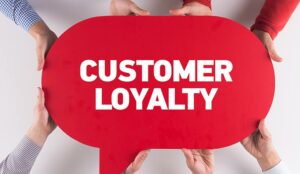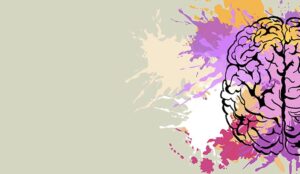A lot of business professionals talk about customer loyalty. However, if I’m totally honest, they often don’t know what they are talking about. Or they do know what they are talking about, but what they are talking about is not customer loyalty!
Many of the organizations I have worked with say that customer loyalty means, “the customer buys everything from us.” But buying everything from you does not make them loyal. Great customers? Yes. Loyal customers? Not so fast.
Customer loyalty is not the same thing as customer sales volume. Sales volume follows loyalty, but it does not form loyalty. In other words, sales volume is an effect, a behavior of customer loyalty, but not an exclusive attribute. It could be that the company that “buys everything” from you is doing so out of habit, not choice, and is only one tempting sales pitch away from ditching you for the competition.
Customer loyalty is a more in-depth concept than mere sales numbers. It is emotional. We discuss this further in our podcast What Really Is Customer Loyalty? My colleague, Professor Ryan Hamilton of Emory University, describes customer loyalty as a relationship state, e.g., an emotional connection, more than a behavior, like buying loads of stuff. Loyalty indicates that you value your interactions with the firm for more than just the transactions that you make with them. Another way to look at it is that you have feelings for them.
(And, for heaven’s sakes, loyalty reward programs and loyalty cards do not build loyalty. The rewards you get for giving a brand your business only become part of the offer in most customer’s minds.)
So, What Really Is Customer Loyalty?
As global customer experience consultants, we explain it this way to our clients:
Customer Loyalty is the result of a consistently positive emotional experience, rational attribute-based satisfaction, and perceived value of an experience that includes the product or services.
Some great things about loyal customers are:
- They stick with you, even when there could be reasons to explore their options.
- They do not require a lot of marketing dollars to educate them about your offerings.
- They are less likely to shop around.
But probably the most significant thing about a loyal customer is:
- They will make sacrifices for you and buy from you even when they have a different and possibly better option than yours.
When you consider all these things, it is clear why customer loyalty is something every brand wants.
So, What Do You Do To Get It?
When writing The Intuitive Customer, we asserted that customer loyalty is an effect of memory. It is not that you choose a company based on the experience you had with them; you choose it because of the experience you remember you had with them. Therefore, if you want to facilitate customer loyalty, then you need to focus on how memories are formed—and ensure you create a memory that is spot on!
Professor Daniel Kahneman, winner of the Nobel Prize for Economics, and Amos Tversky explored how we develop memories many years ago. One of the many concepts they discovered is the Peak-End rule.
The Peak-End Rule says that two specific moments in an experience help form memories, the most potent emotion (aka, peak) and the sentiment felt at the conclusion (aka, end). All experiences have both a peak and an end, to varying degrees of intensity. When these moments are less intense, you remember less about the experience overall. Likewise, if these moments are passionate, you remember an experience with more detail than when they were weaker. Professor Hamilton refers to this concept as a retrospective evaluation, meaning how you assess an experience looking back on it.
What the Peak-End Rule means to customer loyalty is this: If you want to influence how customers evaluate their experience with you (i.e., their memory of it), then you need to manage the peak emotion felt during your experience and how the customer feels as the experience concludes.
The Peak-End rule dictates that you must celebrate the peak moments when they are positive. It also mandates that you minimize the peak moment when it is negative. In other words, you must make the best even better than it was or the worst less bad than it could have been. Then, no matter what kind of peak you have, you must manage the customer’s emotions so that it all ends well. Or, as a fellow Brit once said, “All’s well that ends well.”
Customer loyalty is more than customer sales volume. It is an emotional connection, not unlike a relationship, that can weather the storm and resist the temptation to seek a better option. Loyal customers are the gold standard for Customer Experience, and any company would be wise to find more of them. The key to forming loyalty lies in your Customer Experience, and more specifically in the memories, your customers have of your Customer Experience. By minding how these memories are formed—in the peak and at the end of your experience—you can help customers remember your experience well.
Author: Guest Author
Published On: 16th Apr 2018 - Last modified: 17th Apr 2018
Read more about - Guest Blogs





































